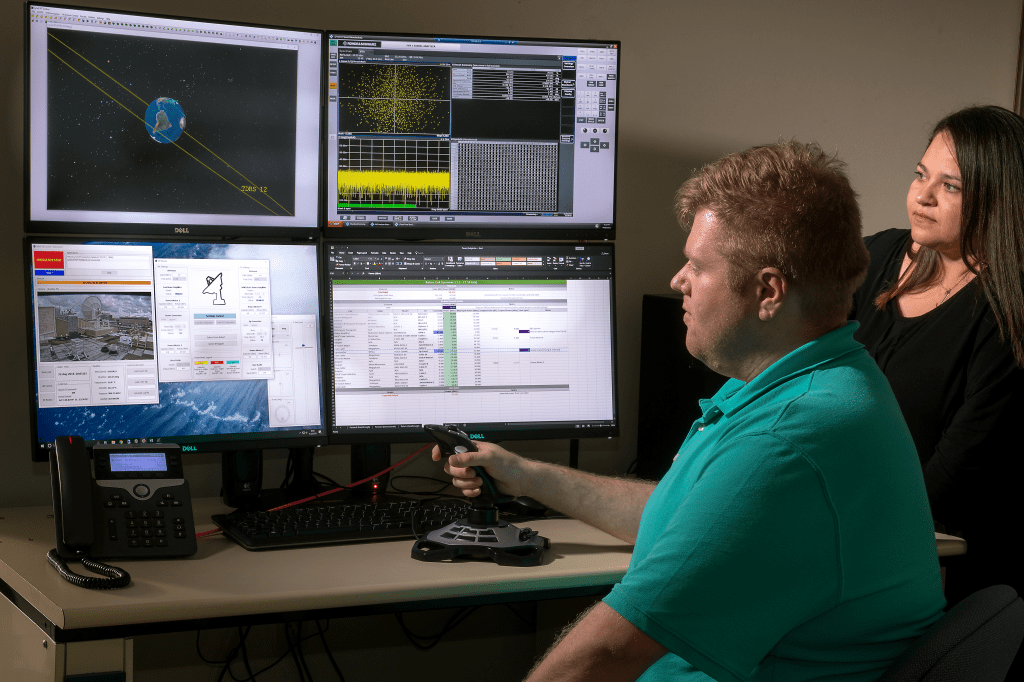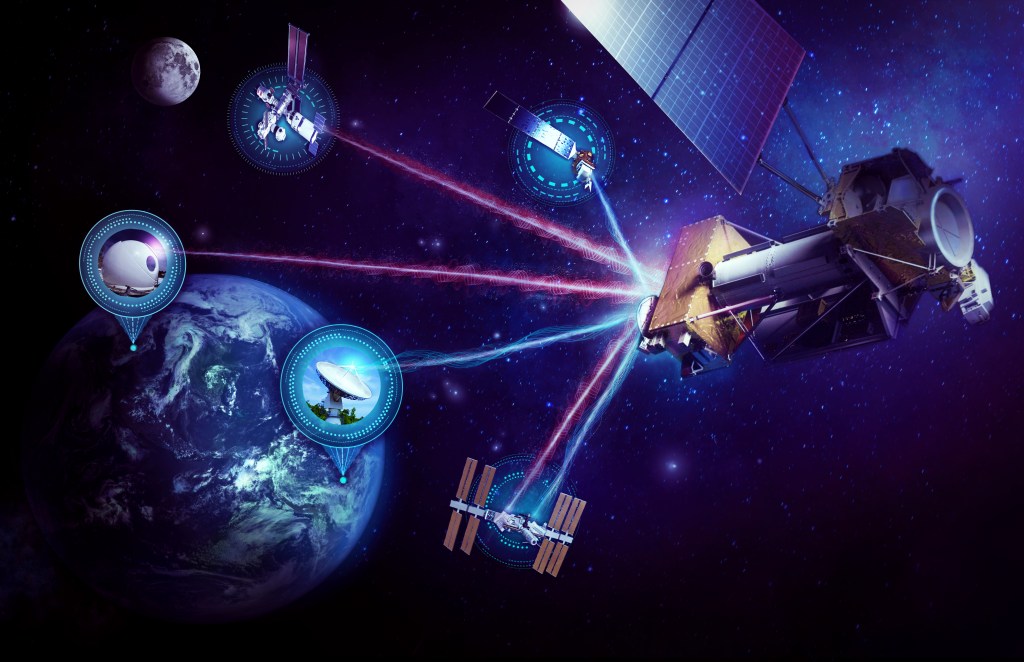The Space Communications and Spectrum Management Office at NASA’s Glenn Research Center in Cleveland, Ohio manages the planning, formulation, implementation, and integration of technology projects and communications system analysis capabilities supporting NASA’s Space Communications and Navigation (SCaN) program. SCaN serves as the program office for all of NASA’s space communications activities, including ground-based facilities and services, and is responsible for the development of space communications and navigation technology.
Glenn’s Space Communications and Spectrum Management office performs technology development for a wide range of SCaN capabilities. The 2024 catalog of active technology projects can be sorted into three main categories: satellite communications (SATCOM) commercialization, lunar technology, and optical technology. In addition, the office is home to Glenn’s spectrum management team, who supports the regulation and allocation of the electromagnetic spectrum at the national and international level.
SATCOM Commercialization
For the last forty years, NASA has relied on the use of its own communications infrastructure to support all space missions. Now, the agency plans to retire the TDRS satellite fleet in the upcoming years. Just as NASA has adopted commercial crew, commercial landers, and commercial transport services, NASA is transitioning towards the adoption of commercial SATCOM services.
Communications Services Project (CSP): NASA’s Communications Services Project, known as CSP, is pioneering a new era of space communications by partnering with commercial industry to develop advanced networking options for near-Earth satellite communications services.
Wideband Commercialization: The Wideband Commercialization Project at Glenn is progressing the development of wideband terminal technology, by identifying potential NASA missions as early adopters of the technology and working to procure wideband terminals that can satisfy mission needs.
Lunar Communications Technology
NASA’s Space Communications and Navigation program is actively building robust and resilient communications infrastructure for the lunar surface in preparation for Artemis, humanities return to the Moon.
3rd Generation Partnership Project (Lunar 3GPP): Glenn’s Lunar 3GPP project is researching how to deploy wireless technologies on the Moon, specifically 4G and 5G technologies. Using networking technology on the surface of the Moon like 4G and 5G technology could help ensure that crew on the Moon can communicate with each other and their vehicles and their instruments reliably.
Lunar Surface Propagation (LSP): Glenn’s LSP project is studying how wireless communications systems perform in the lunar surface environment, as well as how to model, simulate, and emulate lunar communications.
Ka-Steerable Terminal for Lunar Environments (KaSTLE): Glenn’s KaSTLE project is developing a communications system composed of phased array antennas that will enable communications with NASA’s Lunar Terrain Vehicle while the vehicle is in motion on the lunar surface, a key LTV capability required by NASA’s Extravehicular Activity & Human Surface Mobility program.
Optical Communications Technology
Historically, missions have relied on the use of radio waves to exchange information to and from space. Now, NASA is embracing the power of laser communications, also known as optical communications, which uses infrared light rather than radio waves to transmit more data at once. Laser communications will enable 10 to 100 times more data transmitted back to Earth than current radio-frequency systems.
High-Rate Delay Tolerant Networking (HDTN): Delay Tolerant Networking was developed by NASA to empower missions with unprecedented connectivity, by storing and forwarding data at points along a network before reaching its destination. Engineers at Glenn have developed High-Rate Delay Tolerant Networking, or HDTN, an implementation of DTN that transfers data four times faster than what is currently available.
Real Time Optical Receiver (RealTOR): Glenn’s Real Time Optical Receiver project, known as RealTOR, is using commercial-off-the-shelf technologies to develop portable, scalable, low-cost solutions for building optical communications ground receivers.
Spectrum Management
NASA’s requirements for access to the radio frequency spectrum began with the formation of the agency in 1958, and those requirements have evolved and grown over the decades to include a wide array of programs and applications. Spectrum Management is an agency-wide function performed by NASA Glenn Research Center that includes both domestic and international coordination and protection of spectrum used for communications and passive sensing. This function involves the development and execution of spectrum policy and relevant analysis functions.
SCaN Internship Project
GRC SCaN hosts an internship program in the Fall, Spring, and Summer for high school, undergraduate and graduate students, fellows, and educators. Open to students 16 and older, the SCaN Internship Project at Glenn Research Center allows interns to perform hands-on training with real mission scenarios, analyze powerful space communication systems, utilize network software tools, and effectively communicate their findings in a final presentation to NASA management.

Cognitive Communications
Intelligent, autonomous communications systems working together to optimize the exploration of our solar system.

Communications Services Project
NASA Explores Commercial SATCOM Capabilities with new Communications Services Project

High-Rate Delay Tolerant Networking (HDTN)
Bringing the scalability, reliability, and performance of the Internet to space – we get your data home.

Lunar LTE Studies (LunarLiTES)
Testing 4G and 5G communications for the lunar surface.

Real Time Optical Receiver (RealTOR) Project
A high-speed, low-cost solution for developing optical communications photon counting ground receivers.

Spectrum Management at NASA
Spectrum Management is cooperative effort. Space Communications and Navigation (SCaN) performs the spectrum management tasks for all of NASA’s missions encompassing human and autonomous spaceflight missions.

Wideband Commercialization Project
Enabling interoperability between government and commercial owned networks for near-Earth services.
Keep Exploring
Discover More Topics From NASA

